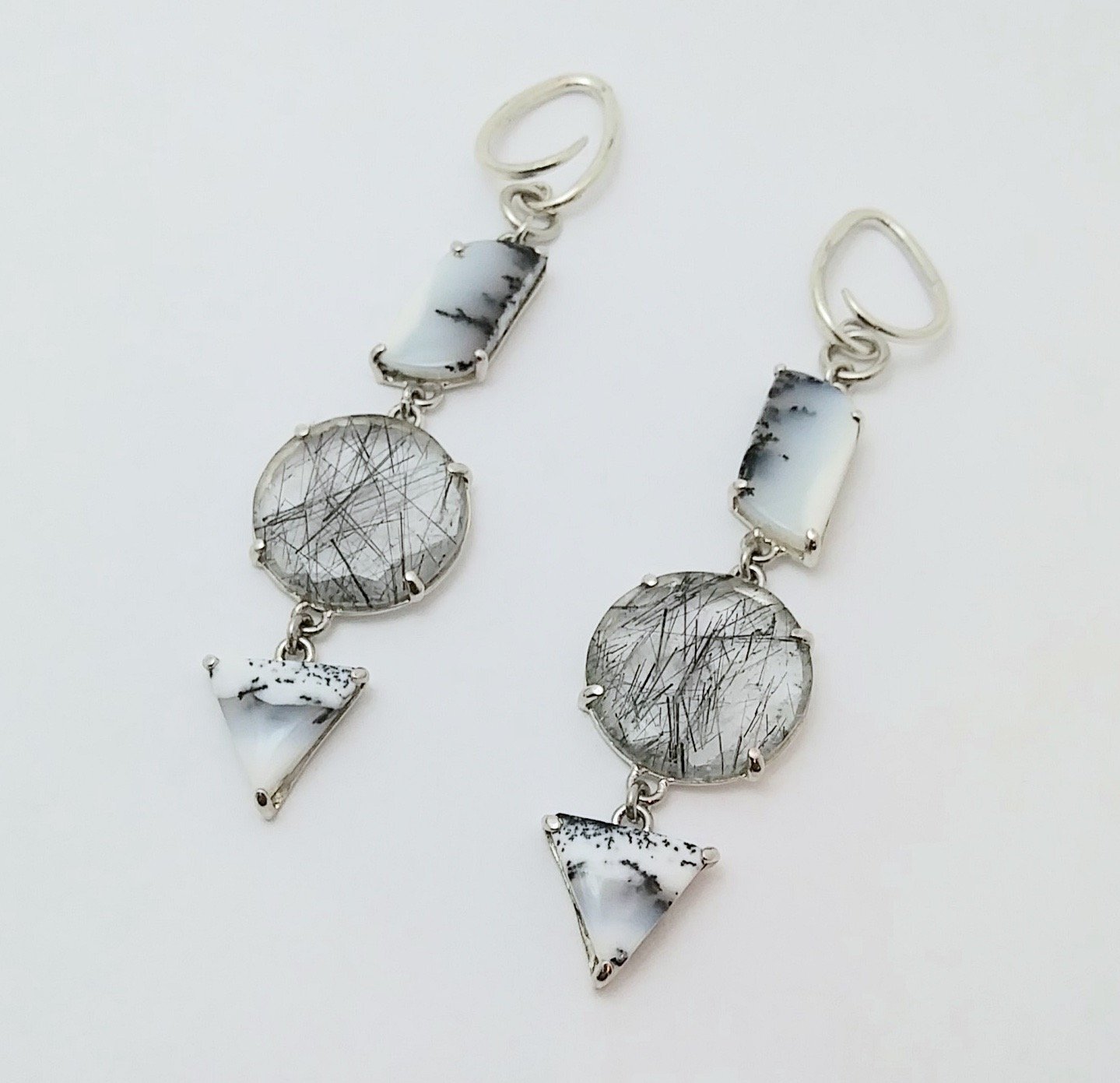 Image 1 of 2
Image 1 of 2

 Image 2 of 2
Image 2 of 2



Labradorite Dangles
Labradorite is one of our favorite stones. Catching flash in blue, green and gold, these babes have a whole lot of shine. Cute little faceted teardrops add just a little second accent, all surrounded by textured brass. Set on 8g coils, just under 4" in total length.
Labradorite is a member of the Feldspar family and is treasured for its remarkable play of color, known as labradorescence. The stone, usually gray-green, dark gray, black or grayish-white, is composed in aggregate layers that refract light as iridescent flashes of peacock blue, gold, pale green, or coppery red. The predominant blue varies within the light, displaying hues from deepest blue to various shades of pale, almost blue-green. It was discovered in Labrador, Canada, by Moravian missionaries in 1770 who named it for the area. It is, however, referenced in legends by older Inuit tribes, and was known to be in use by the Boethuk peoples of Newfoundland and Labrador. It became a popular gem in Europe in the eighteenth and nineteenth centuries.
Labradorite is one of our favorite stones. Catching flash in blue, green and gold, these babes have a whole lot of shine. Cute little faceted teardrops add just a little second accent, all surrounded by textured brass. Set on 8g coils, just under 4" in total length.
Labradorite is a member of the Feldspar family and is treasured for its remarkable play of color, known as labradorescence. The stone, usually gray-green, dark gray, black or grayish-white, is composed in aggregate layers that refract light as iridescent flashes of peacock blue, gold, pale green, or coppery red. The predominant blue varies within the light, displaying hues from deepest blue to various shades of pale, almost blue-green. It was discovered in Labrador, Canada, by Moravian missionaries in 1770 who named it for the area. It is, however, referenced in legends by older Inuit tribes, and was known to be in use by the Boethuk peoples of Newfoundland and Labrador. It became a popular gem in Europe in the eighteenth and nineteenth centuries.
Labradorite is one of our favorite stones. Catching flash in blue, green and gold, these babes have a whole lot of shine. Cute little faceted teardrops add just a little second accent, all surrounded by textured brass. Set on 8g coils, just under 4" in total length.
Labradorite is a member of the Feldspar family and is treasured for its remarkable play of color, known as labradorescence. The stone, usually gray-green, dark gray, black or grayish-white, is composed in aggregate layers that refract light as iridescent flashes of peacock blue, gold, pale green, or coppery red. The predominant blue varies within the light, displaying hues from deepest blue to various shades of pale, almost blue-green. It was discovered in Labrador, Canada, by Moravian missionaries in 1770 who named it for the area. It is, however, referenced in legends by older Inuit tribes, and was known to be in use by the Boethuk peoples of Newfoundland and Labrador. It became a popular gem in Europe in the eighteenth and nineteenth centuries.




